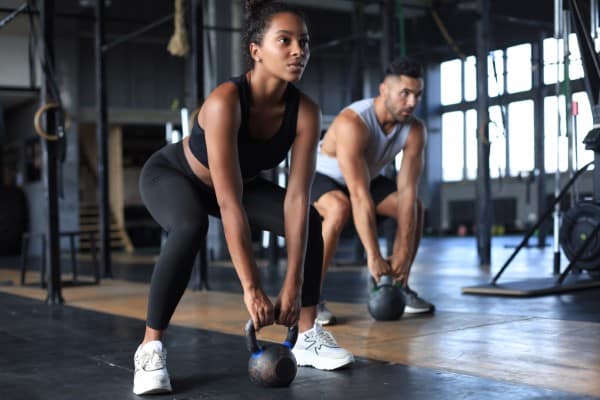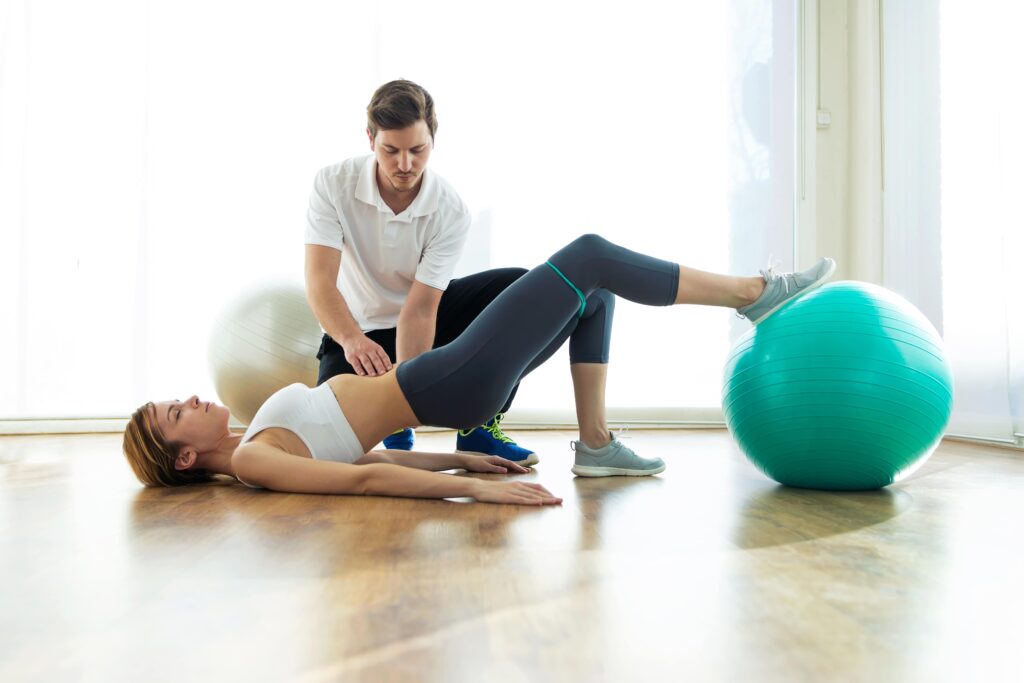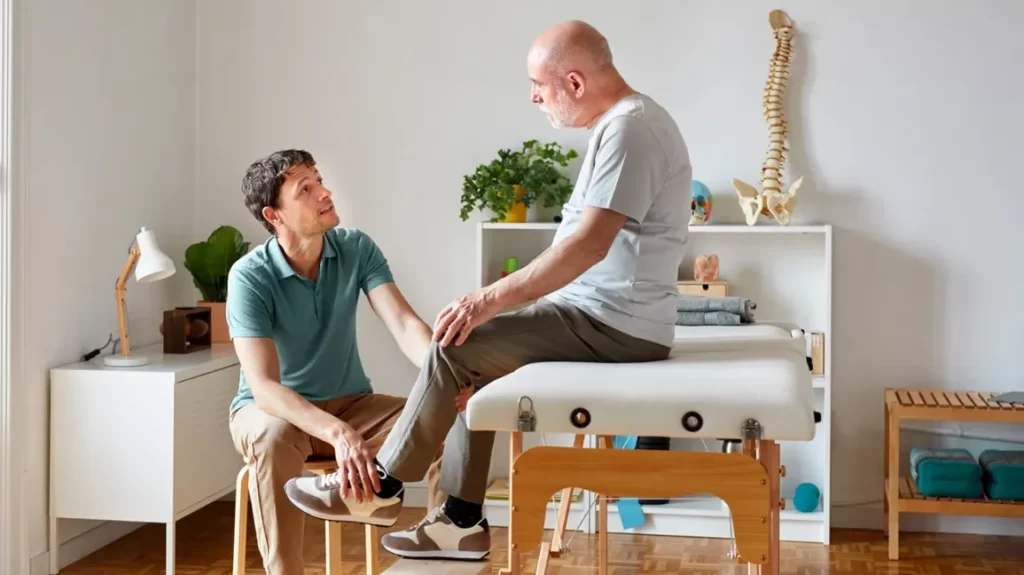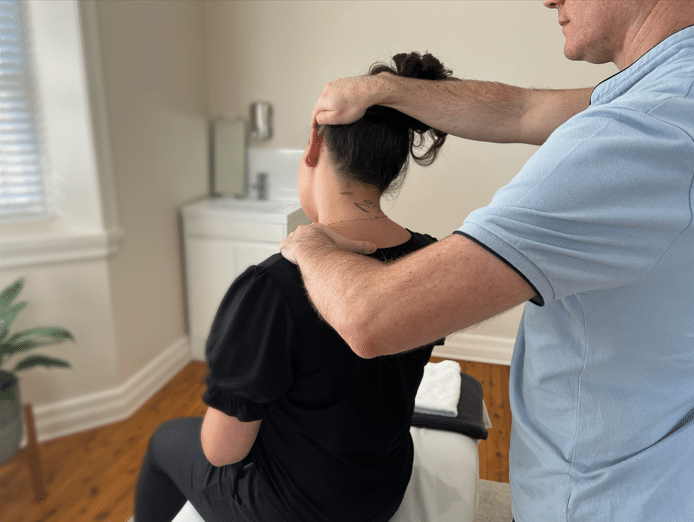- 02 9712 1736
- [email protected]
- 212 Great North Road, Five Dock, NSW 2046
- Open 7 days a week
Picture reaching for your coffee mug and feeling that twinge in your shoulder. Or think about playing with your kids but being stopped by knee pain. If this sounds familiar, you’re not alone. Many of our patients come to us with similar stories, but here’s the good news. Understanding and applying functional movements can transform how you move and feel every day.


Did you know that 68% of adults between 30-60 years old experience movement limitations that affect their daily activities? Functional movement isn’t a fitness fad. It’s a method backed by scientific research for understanding how our bodies move in a natural way. The Journal of Strength and Conditioning Research shows that functional movement patterns link to our ability to perform daily tasks without pain.
Research from Functional Movement Systems (FMS) shows our bodies move in connected patterns. Reaching for something on a high shelf involves more than your arm. You also use your core, adjust your shoulder blade, and keep your legs balanced. This is what makes functional movement different from traditional exercises that isolate single muscle groups.
A 2023 study in the Journal of Physical Therapy Science found that individuals who incorporated functional movement training experienced:
Improving movement begins by understanding what you can do now. This is where a through professional assessment is crucial. When you see a musculoskeletal healthcare professional, they will do a thorough screening. This will provide important information about your body. A proper movement screen identifies any limitations that might be contributing to your pain or discomfort. It also shows compensation patterns. These are ways your body may adapt to restrictions. If left unaddressed, these adaptations could cause problems later on. Your practitioner assesses your movement. They find your baseline and highlight areas that need attention.

Combining functional movement with osteopathy and chiropractic care offers a powerful path to long-term health. Your journey usually starts with a functional movement screen. Here, your practitioner examines your movement patterns with great attention. Based on these findings, you will get targeted, hands-on treatment to improve any movement restrictions found. Your practitioner will then create a personal functional movement programme, for you. Your treating practitioner will check your progress at regular intervals and adjust your programme as you improve. This step is important. As you improve, your practitioner will add new and more challenging exercises. These will reinforce your correct movement patterns.
Research shows that this integrated approach is effective. Patients experience pain relief at a faster rate compared to single-method treatments. The results are often more sustainable over time. Studies show better long-term outcomes and a much lower risk of future injuries.

Under professional guidance, you’ll learn the foundational movements that form the basis of daily activities. The hip hinge, for example, is essential for safely picking things up. The hip hinge is a movement we all perform countless times each day. Stand with your feet hip-width apart. Keep your spine neutral for this movement. The key lies in bending from your hips while keeping a slight knee bend. Think about pushing your hips backward rather than simply bending forward at the waist. It won’t take long to realise without the proper guidance and cues it is acutually difficult to change this movement pattern.
The controlled squat represents another vital movement pattern used in many daily functions. To perform this movement effectively, start by establishing stable, aligned foot positioning. The movement should feel like you’re sitting back into a chair. Keep your weight primarily in your heels. Throughout the movement, focus on keeping your chest up and your core engaged. This helps with stability and control.

Professional guidance becomes particularly important in several situations. If you feel pain when moving, it may signal underlying problems that need attention. Those with previous injuries should seek professional advice to ensure safe movement progression. If you’re unsure about proper form or want to progress safely in your movement practice, working with a healthcare professional can give you the guidance and support you need for the best results.
Functional movement isn’t about being perfect. It’s about moving better in ways that matter to your daily life. If you have old injuries, current pain, or want to avoid future issues, combining functional movement with expert care offers a comprehensive solution .
Ready to move better and feel better? Contact our team for a functional movement assessment. We’ll help you understand your current movement patterns and create a personalized plan to help you achieve your goals.


Forest Lodge, Annandale, Glebe, Leichhardt, Balmain, Haberfield, Canada Bay, Rozelle, Rodd Point, Wareemba, Stanmore, Petersham, Lilyfield, Hunters Hill, Enfield, Cabarita, Mortlake, Rhodes, Burwood Heights, Birchgrove, Gladesville, Huntleys Point, Abbotsford, Ashfield, Croydon Park, Croydon, Chiswick, Russell Lea, Burwood, Strathfield, Concord, Drummoyne, North Strathfield, Liberty Grove, Dulwich Hill, Lewisham, Camperdown, Ashbury, Homebush, Homebush West, Woolwich, Henley, Summer Hill, Sydney Olympic Park

About
Five Dock Osteopathic & Chiropractic is located in Canada Bay, in Sydney’s Inner West. Servicing suburbs including Burwood, Croydon, Drummoyne, Five Dock, Haberfield, Concord, Abbotsford, Chiswick, Leichhardt, Wareemba, Russell Lea, Summer Hill, Strathfield.
Clinic hours
Monday, Tuesday, Thursday 7AM – 7PM
Wednesday, Friday 7AM – 6PM
Saturday 7AM – 2PM
Sunday 8AM – 2PM
Contact details